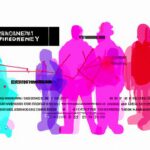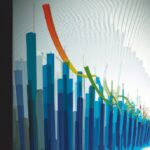The Theil index is widely used in economics to measure income inequality within a population. It provides valuable insights into the distribution of wealth and helps policymakers gauge the effectiveness of economic policies. By analyzing the Theil index, economists can identify disparities in income distribution and assess the impact of various factors on economic inequality. Understanding these economic applications of the Theil index is essential for promoting more equitable and sustainable development strategies. Policymakers can use the information derived from the Theil index to design targeted interventions that reduce inequality and improve overall economic well-being for all members of society.
Table of Contents
- Income inequality measurement
- Overview of Theil index
- Policy implications
- Regional economic disparities
- Sectoral productivity analysis
(Theil index)
The Theil index is utilized in economics to measure income inequality within populations. Developed by Henri Theil, this index is valuable for policymakers and researchers to analyze and address disparities among individuals. Governments can use this tool to create strategies for redistributing wealth and promoting economic growth. By identifying areas with high levels of inequality, interventions can be implemented to ensure a more balanced distribution of resources. The beauty of the Theil index lies in its ability to offer a comprehensive view of economic disparities and guide decision-making processes. Its application extends beyond income inequality to encompass various economic indicators like productivity, wages, and social welfare. Economists leverage the Theil index to assess and compare income distributions across different regions or countries. This index enables them to pinpoint areas in need of attention and formulate targeted policies to foster inclusive economic development. Overall, the Theil index serves as a powerful instrument for promoting equity and enhancing overall economic well-being on both local and global scales.
Income inequality measurement
When we delve into the realm of income inequality measurement, one powerful tool that comes to light is the Theil index. Picture this: a mathematical lens through which we can scrutinize disparities in income distribution within a population. This index doesn’t just crunch numbers; it unravels stories of haves and have-nots.
Imagine a bustling cityscape where high rises kiss the sky while shanties cling to the earth. Income inequality paints such diverse pictures even within short distances. The Theil index steps in as our compass, guiding us through these economic landscapes with precision.
As we peer deeper into its calculations, emotions stir – empathy for those struggling on the lower rungs, curiosity about how fortunes diverge so starkly, and perhaps even a sense of urgency to bridge these gaps. We’re not merely analyzing figures here; we’re confronting societal narratives etched in statistical form.
The beauty of the Theil index lies in its ability to quantify an intangible concept like inequality. It assigns values that speak volumes about fairness or lack thereof in wealth distribution among peers. Each numerical output whispers tales of disparity or harmony echoing across neighborhoods and nations alike.
At times, unveiling these truths may evoke discomfort – a sobering realization that prosperity isn’t always shared equitably amongst all members of society. However, with this discomfort comes opportunity – an impetus for policymakers and activists to strive towards creating more inclusive economic systems where everyone has a fair shot at thriving.
Moreover, understanding income inequality through the lens of the Theil index isn’t just about identifying problems; it’s also about envisaging solutions. By pinpointing regions or demographics experiencing heightened inequalities, targeted interventions can be designed to uplift those most marginalized by financial divides.
In essence, delving into income inequality measurement with tools like the Theil index isn’t merely an academic exercise; it’s an emotional journey unveiling human stories woven intricately into economic fabrics. As we navigate this terrain armed with data and empathy hand-in-hand, we inch closer towards fostering economies where equality isn’t just a lofty ideal but a lived reality for all individuals striving for dignity and empowerment within their communities
Overview of Theil index
Let’s dive into the realm of economic applications with a focus on the enigmatic Theil index. This index, named after Dutch economist Henri Theil, serves as a powerful tool for measuring inequality within populations or sectors. Imagine it as a magnifying glass that reveals disparities hidden beneath the surface of seemingly uniform data.
At its core, the Theil index dissects distribution patterns to expose areas where wealth or resources concentrate disproportionately. Picture a bustling city skyline at night – some buildings tower high in dazzling brightness while others stand dim and shadowed below. This visual analogy mirrors how the Theil index illuminates variations in income, consumption, or any other metrics across different segments of society.
When we apply this concept to real-world scenarios, such as national economies or industries, profound insights emerge. Suppose we explore income inequality using the Theil index: it provides us with nuanced perspectives beyond simple average calculations. We uncover not just who holds what share of total income but also how unevenly that wealth spreads among individuals or regions.
In essence, the Theil index sharpens our gaze on fairness and equity within systems by pinpointing areas ripe for intervention or reform. It acts as a compass guiding policymakers towards targeted solutions rather than generic remedies.
As we navigate through economic landscapes shaped by globalization and technological advancements, understanding and utilizing tools like the Theil index become paramount. Its ability to capture intricate dynamics of disparity equips decision-makers with tailor-made strategies capable of fostering more inclusive growth and development.
The journey into economic applications of the Theil index is akin to embarking on an expedition through uncharted territories where each calculation unravels layers of social fabric woven with threads of privilege and deprivation.
In conclusion, delving into the world of economic applications brings forth a deeper appreciation for complexities inherent in societal structures. Through lenses crafted by thinkers like Henri Theil, we gain clarity amidst ambiguity – paving pathways towards building more equitable futures for all those touched by our decisions.
Policy implications
When we dive into the realm of policy implications within the economic applications of the Theil index, a profound understanding emerges. This metric offers us a lens through which to analyze income inequality and distribution patterns in society. As policymakers grapple with tackling these issues, the Theil index stands as a powerful tool guiding their decisions.
One crucial implication lies in its ability to pinpoint regions or demographic groups experiencing heightened levels of income disparity. By identifying these disparities, policymakers can tailor interventions to address specific areas where inequalities are most pronounced. This targeted approach has the potential to create more effective and impactful policies that directly combat income inequality at its roots.
Moreover, the Theil index sheds light on trends over time, allowing policymakers to track changes in income distribution patterns. This longitudinal analysis enables stakeholders to measure the impact of existing policies and adjust them accordingly for greater efficacy. Emotions run high as these insights reveal not just numbers on a chart but real-life stories of individuals impacted by economic inequalities.
As governments strive for inclusive growth and social cohesion, leveraging the nuances captured by the Theil index becomes paramount. Its quantitative precision paired with qualitative implications empowers decision-makers to foster environments where all members of society have access to opportunities and resources essential for well-being.
On a global scale, this tool transcends borders, offering comparisons between countries and highlighting best practices in addressing income inequality effectively. It sparks conversations among nations aiming for sustainable development goals that prioritize reducing disparities within and across populations.
In conclusion, delving into policy implications using the framework provided by the Theil index deepens our comprehension of socioeconomic dynamics at play around us. It stirs empathy within us as we confront stark realities faced by marginalized communities while also igniting hope through informed strategies aimed at creating a fairer and more equitable world for generations to come.
("Economic Convergence through the Theil index capital and productivity per worker")
Regional economic disparities
Regional economic disparities are like fractures in the foundation of a house, often invisible but capable of causing immense damage. The Theil index serves as a magnifying glass, revealing these hidden fault lines and shedding light on the unequal distribution of wealth among regions.
In our world today, bustling metropolises stand in stark contrast to forgotten rural areas left behind by progress. This disparity is not just about money; it’s about opportunities lost, dreams shattered, and communities struggling to stay afloat amidst the rising tide of inequality.
Picture this: gleaming skyscrapers piercing the sky in one city while crumbling infrastructure plagues another town just miles away. The numbers might tell one story, but the silent anguish etched on people’s faces paints a different reality—one where hope feels like a distant memory for those trapped in neglected regions.
As we delve deeper into the realm of regional economics through the lens of the Theil index, a tale unfolds—a narrative woven with threads of resilience and despair. It reveals how some regions thrive with abundant resources and investments flowing like rivers, while others languish in desolation with their potential untapped and aspirations crushed underfoot.
The hum of prosperity echoes loudly in certain corridors where businesses flourish and innovation dances hand-in-hand with progress. Meanwhile, whispers of hardship permeate the air in neglected corners where unemployment looms large and poverty tightens its grip on generations caught in an unending cycle.
What does all this mean for us? It means that behind every statistic lies a human face—an individual yearning for dignity, security, and a chance to build a better life for themselves and their loved ones. It beckons us to look beyond numbers on paper and see the heartbeats pulsating within each region—some strong with vitality; others faint with fatigue from bearing burdens too heavy to carry alone.
So let us heed the call of empathy stirred by understanding regional economic disparities illuminated by the unforgiving gaze of the Theil index. Let us strive not just for equal numbers on balance sheets but also for equitable opportunities that allow every region to thrive—together forging a future where prosperity knows no boundaries or borders erected by disparity’s cruel divide.
Sectoral productivity analysis
Sectoral productivity analysis is like peering through a magnifying glass into the inner workings of different industries within an economy. It’s where we get up close and personal with how efficient each sector is in turning inputs into outputs, giving us insights into who’s pulling their weight and who might need some extra coaching.
Imagine you’re at a bustling marketplace, watching vendors working away at their stalls. Some are smoothly churning out products, while others seem to be struggling to keep up. That’s similar to what sectoral productivity analysis does—it shines a spotlight on these disparities.
As we delve deeper into this world of economic detective work, we start by collecting data on things like labor input, capital investments, and overall output for various sectors such as agriculture, manufacturing, or services. Each piece of information is like a puzzle piece waiting to be fitted together.
The Theil index comes in handy here as our trusty tool for measuring inequality in productivity across sectors. It helps us quantify just how evenly—or unevenly—productivity is distributed among different parts of the economy. Think of it as a scoring system that rates each sector based on its efficiency levels.
Now let’s bring some emotion into the mix. Picture yourself rooting for the underdog—a small sector that’s been lagging behind in terms of productivity compared to its peers. With sectoral productivity analysis armed with Theil index insights, policymakers can step in with targeted interventions to give that struggling sector the boost it needs to thrive.
On the flip side, there may be star performers hogging all the limelight with their sky-high productivity levels. While they deserve applause for their hard work and ingenuity, too much dominance from one or two sectors could spell trouble for overall economic balance.
By using tools like the Theil index within this realm of sectoral scrutiny, economists can craft policies aimed at fostering a more balanced playing field where every industry has its chance to shine without overshadowing others too much.













